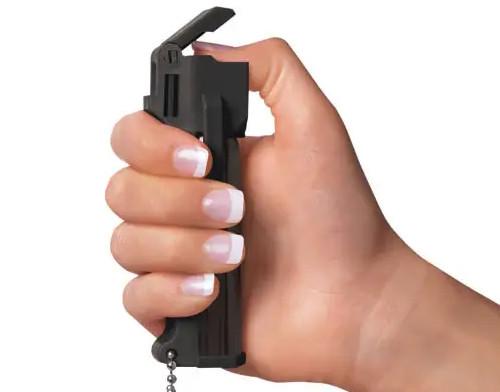Table of Contents
- Planning Your Route for Maximum Safety
- Enhancing Situational Awareness and Avoiding Common Pitfalls
- Choosing the Right Self-Defense Tools for Nighttime Walking
- Practical Techniques and Mindset for Confident Self-Protection
- Insights and Conclusions
Planning Your Route for Maximum Safety
Choosing a safe and well-lit path is the cornerstone of protecting yourself when walking alone at night. Prioritize main roads, areas with consistent street lighting, and routes that are frequented by other pedestrians or vehicles. Avoid shortcuts through isolated alleyways, parks, or poorly lit areas where visibility is limited. By selecting paths that are visible and populated, you significantly reduce the opportunity for potential threats to go unnoticed.
Before heading out, consider mapping your route using a smartphone or a trusted app that offers real-time location sharing. This not only helps you stay on track but also allows a trusted contact to monitor your progress. Additionally, always inform a friend or family member about your estimated arrival time and route. Carrying a small whistle or personal alarm and being aware of nearby safe havens, like 24/7 stores or police stations, can further enhance your security during nighttime walks.
- Stick to busy, well-lit streets.
- Share your live location with a trusted contact.
- Inform someone about your route and estimated arrival.
- Identify safe spots along your way in advance.
- Carry a personal safety device, like a whistle or alarm.
Enhancing Situational Awareness and Avoiding Common Pitfalls
Maintaining heightened situational awareness is your first line of defense when walking alone at night. Stay alert by keeping your head up, avoiding distractions such as excessive phone use, and actively scanning your surroundings. Notice details like unusual behavior, poorly lit areas, and escape routes. Trust your instincts-if something feels off, it probably is. Simple habits like walking confidently, making eye contact with passersby, and avoiding isolated shortcuts can significantly reduce your risk of becoming a target.
Equally important is recognizing and avoiding common pitfalls that compromise your safety. Don’t rely solely on headphones or loud music that can mask approaching threats. Avoid displaying valuables openly, and keep your belongings secure and close to your body. When using apps to share your location or notify contacts of your arrival, double-check that they are set up properly to work in real-time. Lastly, avoid assumptions about the safety of familiar routes-always stay vigilant, as danger can arise in the most unexpected places and moments.
Choosing the Right Self-Defense Tools for Nighttime Walking
When selecting self-defense tools for nighttime walking, it’s essential to consider practicality and ease of use. Items like pepper spray, personal alarms, or compact stun guns are excellent choices because they are discreet yet effective at deterring potential threats. Portability is key; your chosen tool should fit seamlessly into your daily carry items without compromising comfort. Additionally, ensure that your tool is legally permissible in your area, so you avoid unforeseen legal complications.
Beyond legality, another critical factor is your familiarity and confidence with the tool. Investing time in learning how to properly use pepper spray or a personal alarm can make a significant difference in a real-life scenario. Consider these factors:
- Size and weight: Choose something light and easy to carry, ideally attachable to a keychain or bag.
- Activation speed: Tools that can be deployed instantly will give you a critical advantage.
- Training availability: Opt for devices with available tutorials or local self-defense classes.
Matching your tool to your comfort level and environment will enhance your confidence and ensure you’re prepared to handle unexpected situations while walking alone at night.
Practical Techniques and Mindset for Confident Self-Protection
Building a confident mindset is just as crucial as knowing physical self-defense techniques. Start by adopting a posture of awareness and assertiveness: hold your head high, maintain steady eye contact with your surroundings, and project confidence through your body language. Remember, attackers often look for individuals who seem unsure or distracted. Ground yourself in the present moment by regularly scanning your environment, noting escape routes, and trust your instincts if something feels off. Incorporating simple breathing exercises can further calm nerves and enhance your focus, making you less vulnerable to intimidation or surprise.
In addition to mental preparedness, mastering a few practical techniques can significantly boost your ability to protect yourself. Focus on straightforward moves such as quick disengages, palm strikes, and low kicks that target vulnerable areas like the knees or shins. Carrying a personal safety device-like a whistle or pepper spray-and knowing how to use it effectively can also provide an extra layer of security. Here are some key points to remember:
- Stay light on your feet: This improves mobility to evade or counter threats quickly.
- Use your voice: Loud, clear commands can deter potential attackers and alert others.
- Avoid confrontation when possible: De-escalation is the safest route, so prioritize escape.
- Practice regularly: Confidence grows with repetition and muscle memory.
Insights and Conclusions
Staying safe while walking alone at night doesn’t have to be daunting. By incorporating these essential self-defense tips into your routine-staying aware of your surroundings, trusting your instincts, carrying practical tools, and being prepared-you can significantly reduce your risk and boost your confidence. Remember, your safety is always worth prioritizing. Stay vigilant, stay prepared, and walk with assurance knowing you’ve equipped yourself to handle whatever comes your way.Check Our Other Blogs
- StunGun – Your Trusted Source for Stun Guns, Laws, and Self-Defense Tips
- PepperSprayLaws – Your Trusted Resource for Pepper Spray Information
- StunGunLaws – Your Trusted Guide to Stun Gun Legality and Safety



